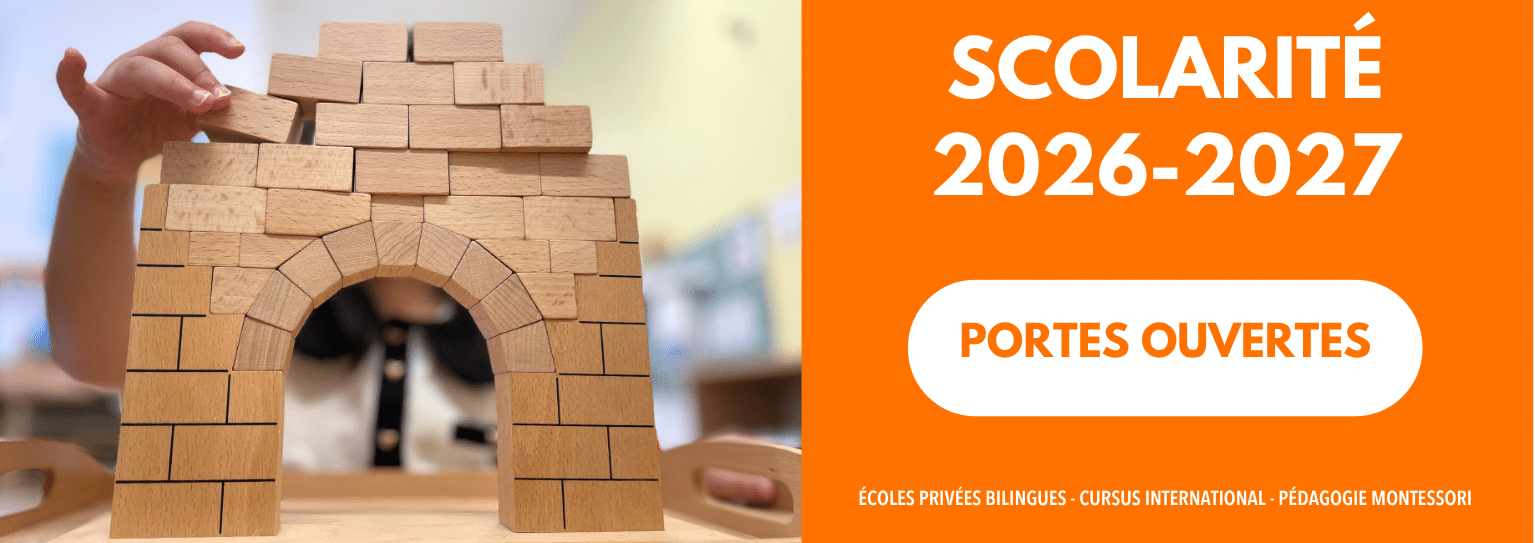Main differences between a bilingual Montessori kindergarten and a traditional kindergarten
A bilingual Montessori nursery school and a conventional nursery school differ in a number of respects, including pedagogical approach, language teaching and emphasis on child autonomy. Here's a brief comparison of the two systems:
- Pedagogy: Montessori pedagogy focuses on autonomy, discovery through manipulation and learning at one's own pace. Children choose their activities from several areas of learning, called "areas" in Montessori: we have practical life, sensory, language, mathematics and discovery of the world. All the workshops in these areas have been carefully prepared by the educators to encourage concentration and exploration. Our educators are specifically trained in this pedagogical method, both in France and abroad. In a traditional nursery school, whether private or public, learning is led by a single teacher and is generally more collective, with fewer teaching aids available in the classroom due to limited budgets. In addition, the large size of class groups means that individual supervision is not always possible.
- Language teaching: As the name suggests, a Montessori bilingual nursery school teaches its pupils in both languages. This is generally done in an immersive way, meaning that the two languages circulate continuously in the student's daily life at the school, and not just on the occasion of a weekly session or two. For example, at 123 mon école, a French-speaking teacher and an English-speaking teacher teach the class all day long, each in her own language. A conventional nursery school teaches in French.
- Child autonomy: Montessori schools strongly encourage children's autonomy and decision-making. Although supervised by their educators, children are encouraged to choose their activities individually and to work at their own pace. In a Montessori kindergarten, the older children are expected to help the younger ones. This tutoring fosters a sense of responsibility, mutual respect and sociability. Conventional nursery schools can of course encourage autonomy, but they have less flexibility when it comes to breaking down class divisions.
- Learning environment: Montessori schools focus on creating a learning environment that is both stimulating and peaceful. Classrooms are generally organized into different learning zones, with concrete, specific teaching aids adapted to children's strength and development. Classic kindergarten classrooms can also feature themed corners, but here again, lack of resources means that teachers can't deploy them as they'd like.
- Monitoring learning : In a Montessori school, the assessment of learning is based on observation and monitoring of the child's progress over time. For each child, a pedagogical booklet is completed every six months by the educators, ensuring that the competencies required by the French Ministry of Education at the end of the cycle have been acquired.
In all cases, whether Montessori or not, each school has its own school project. The quality of a school always varies according to its management, teachers and educational community. That's why we recommend that you visit each school carefully. Don't hesitate to gather testimonials from families who attend the school, and check out the safety and hygiene points that you can appreciate during your visit. Finally, a good reading of the school's pedagogical project, as well as a dose of intuition, will help you make your choice.



